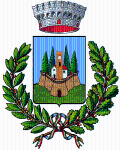Descrizione
Il toponimo Guistrigona che oggi come nel passato individua un villaggio distribuito lungo una strada, è citato più volte nel Cartulario della Berardenga a partire dall’anno 1020, mentre la chiesa di San Donato è menzionata dal 1054, la ecclesia S. Cristofani appare nel C.B. dal 1131. Delle due chiese la più antica era quella dei SS Cristoforo e Giusto (oggi scomparsa) risalente forse all’alto medioevo e che nel 1151 risultava sotto il giuspadronato di Sant’Antimo , mentre quella di San Donato, ancora esistente e che diventerà sede parrocchiale, sarà assegnata ( da Papa Alessandro III nel 1181) alla Abbazia Berardenga.
Fra il 1248 e il 1252 durante il censimento dei “cittadini salvatici” a Guistrigona vennero individuati da 25 a 34 soggetti d’imposta.
Proprio dal Catasto del 1320 emerge tutta l’importanza del “comunello” di Guistrigona che con 20 fra poderi ed abitazioni che lo componevano, sommava 82 case e vari annessi.
Pochi decenni dopo (1366 e 1367) al momento della fondazione del Castello Nuovo, al quale fu chiamata a contribuire si poteva considerare Guistrigona ( per numero di abitanti) la più importante curia della neonata comunità.
Nel 1494 la famiglia Bulgarini, che aveva vasti possedimenti in zona e anche a Castelnuovo, costruì nella zona di Guistrigona /Bottacci la Villa padronale tutt’ora esistente, dove nel 1801 sarà realizzata la cappella interna ( intitolata a San Francesco Saverio). Al tempo della costruzione della villa di Guistrigona la proprietà era di Bulgarino Bulgarini (1441-1497) che era docente di diritto civile all’Università di Siena e poco dopo emerse la figura di Bellisario Bulgarini (1539-1619) letterato, famoso per la sua raccolta libraria e la polemica antidantesca. Egli visse quasi sempre fra Siena e Guistrigona, salvo tre volte nelle quali dovette spostarsi per andare a Roma-Firenze e Venezia.
Anche nel XVII secolo Guistrigona (allora Gostrigona). fu importante comunello con 28 poderi (Gherardini-1676) o 26 (collette dell’anno 1692), di questi almeno 12 erano del Sig. Bulgarini, 10 di opere religiose-cure e Padri di S.Domenico e Gesuiti. Gli abitanti al 1676 erano 140 (77 m/63 f) con un territorio di quasi 9 Kmq. La chiesa di San Donato mantiene emergenze medievali sia nel portale di ingresso, incastonato nel fronte, che sul lato destro adiacente la strada del Chiantino. Fra i vari depositi archeologici scoperti, spicca la Tomba a camera ipogea in un solo ambiente quadrato di circa 6 x 6 mt, pavimentata a ciottoli, appartenente alla famiglia degli Spiu, databile III-II sec.a. C. ( a 200 mt direzione sud da Bottacci).
English version:
The place name Guistrigona which now, as in the past, identifies a villages running along a road, is mentioned several times in the Berardenga Cartulary beginning in the year 1020, while the church of San Donato is first mentioned in 1054, and the church of S. Cristofani appears in the 1131 Cartulary. The older of the churches was the church of Saints Cristoforo and Giusto (no longer extant) dating perhaps to the early middle ages, which in 1151 was under the patronage of Sant’Antimo , while the church of San Donato, still existing, which became a parish seat, was assigned by Pope Alexander II to the Berardenga Abbey in 1181.
From 1248 to 1252 during the census of “wild citizens”, between 25 and 34 individual subject to taxation were identified.
The 1320 land registry highlights the importance of the “common” of Guistrigona which, with 20 farms and residences, numbered 82 houses and various outbuildings.
A few decades later (1366 and 1367) at the time of the founding of Castello Nuovo to which it was called upon to contribute, in terms of number of inhabitants Guistrigona could be considered the most important curia of the newborn community.
In 1494 the Bulgarini family, which had vast properties in the area as well as in Castelnuovo, built a still-existing Villa in the area of Guistrigona /Bottacci where in 1801 an interior chapel dedicated to San Francesco Saverio was built. At the time of the construction of the villa at Guistrigona the property was owned by Bulgarino Bulgarini (1441-1497) who taught civil law at the University of Siena, and shortly thereafter, Bellisario Bulgarini (1539-1619) a scholar famed for his book collection and his anti-Dante stance. He spent most of his time in Siena and Guistrigona, except for three journeys to Rome, Florence and Venice.
In the 17th century as well, Guistrigona (then Gostrigona) was an important common with 28 farms (Gherardini-1676) or possibly 26 (yearly tax collection book, 1692), 12 of which belonged to Sig. Bulgarini, 10 to religious-nursing organizations and Dominican and Jesuit Fathers. ln 1676 there were 140 inhabitants (77 m/63 f) in a territory of almost 9 square km. The church of San Donato still has medieval traces in its entrance door, set in the facade, and on the right side along the Chiantino road. Important archeological finds include the hypogeum chamber tomb, a single 6x6 meter square with pebble flooring that belonged to the Spiu family and dates to the III-II cent. a. C. (200 meters south of Bottacci).
Modalità d'accesso
accesso libero
Indirizzo
Punti di contatto
Ultimo aggiornamento: 4 marzo 2024, 11:59

